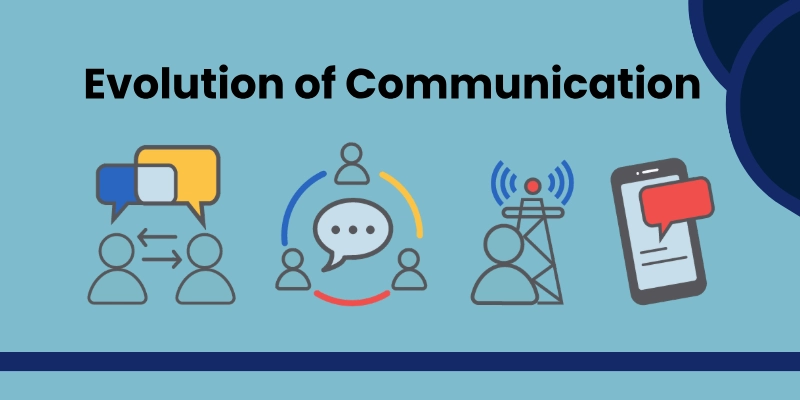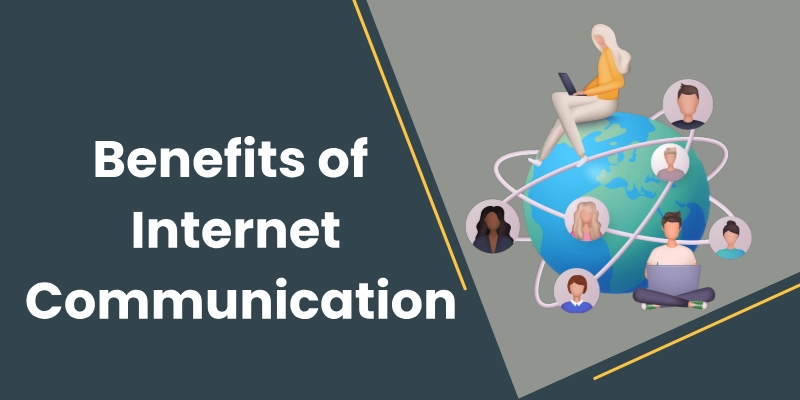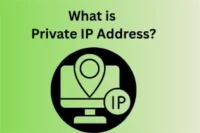How the Internet is Changing Communication?
Published: 26 Jun 2025
The internet has fundamentally transformed the way we communicate. From emails to social media, from video conferencing to instant messaging, digital technology has revolutionized human interaction. Gone are the days of waiting weeks for a letter to arrive now, communication happens in real-time across continents. But how has this evolution shaped our personal, professional, and social lives?

In this article, we’ll explore the profound ways in which the internet is changing communication, its advantages and challenges, and what the future holds for digital interaction.
The Evolution of Communication in the Internet Era
Following is the evolution of communication in the Internet era, showcasing how digital advancements have transformed the way people connect and share information.
From Letters to Instant Messages
Historically, communication relied on physical letters, telegrams, and in-person meetings. With the advent of the internet, email became the first widely adopted digital communication tool, allowing people to exchange messages quickly. Soon after, instant messaging services like AOL, Yahoo Messenger, and later, WhatsApp and Messenger revolutionized real-time communication.
The Rise of Social Media as a Communication Hub
Social media platforms such as Facebook, Twitter, Instagram, and LinkedIn have become central to how people interact. These platforms allow users to share updates, photos, and videos, and engage in discussions instantly. They have also redefined how businesses communicate with customers through direct engagement.
Video Conferencing and the Future of Virtual Meetings
With the rise of platforms like Zoom, Microsoft Teams, and Google Meet, video conferencing has become a mainstream method of communication. It has particularly transformed remote work, enabling businesses to conduct meetings and collaborations without geographical barriers.

The Benefits of Internet-Based Communication
The rise of internet-based communication has revolutionized the way people connect, making interactions faster, more convenient, and globally accessible.
Speed and Efficiency
The internet has made communication almost instantaneous. Emails, texts, and video calls allow individuals and businesses to communicate in real time, saving time and increasing productivity.
Global Connectivity
Regardless of location, people can stay connected with family, friends, and colleagues worldwide. The internet breaks down geographical barriers, making global communication effortless.
Cost-Effective Communication
Unlike traditional long-distance calls or postal services, most internet-based communication tools are free or cost significantly less. Apps like WhatsApp, Skype, and Messenger allow users to make free voice and video calls over the internet.
Increased Collaboration and Knowledge Sharing
The Internet has enhanced collaboration among individuals, organizations, and educational institutions. Tools like Google Docs, Trello, and Slack help teams work together efficiently from anywhere in the world.

Challenges of Internet-Based Communication
Following are some challenges of internet-based communication that impact security, privacy, and the effectiveness of digital interactions.
Privacy and Security Concerns
With digital communication, concerns about privacy and data security have grown. Cybersecurity threats, data breaches, and personal information leaks have made internet users more cautious about online interactions.
Misinformation and Fake News
The rapid spread of information on social media and online platforms has led to the rise of misinformation and fake news. This affects public opinion, political discourse, and even personal relationships.
Over-Reliance on Digital Communication
While the internet provides convenience, it has also led to a decline in face-to-face interactions. People may struggle with personal communication skills due to excessive reliance on digital methods.
Digital Divide and Accessibility Issues
Not everyone has equal access to the internet. Socioeconomic factors, infrastructure limitations, and digital literacy gaps prevent some individuals from benefiting fully from internet-based communication.
The Future of Internet Communication
Following is the future of Internet communication, highlighting upcoming trends, innovations, and advancements shaping the digital world.
Artificial Intelligence and Chatbots
AI-powered chatbots and virtual assistants like ChatGPT, Alexa, and Siri are changing how businesses and individuals interact. AI-driven communication is becoming more natural and efficient, helping users get instant responses and assistance.
Virtual Reality (VR) and Augmented Reality (AR) Communication
VR and AR are set to redefine digital communication by making interactions more immersive. Virtual meetings and social gatherings in digital spaces will become more common.
5G and Faster Internet Speeds
The rollout of 5G technology will further improve internet communication by enhancing speed, reducing latency, and supporting advanced applications like real-time remote surgeries and autonomous communication systems.
Blockchain for Secure Communication
Blockchain technology may revolutionize secure digital communication by providing encrypted and decentralized messaging systems, reducing the risk of data breaches.
Conclusion
The internet has undoubtedly transformed the way we communicate, bringing speed, convenience, and global connectivity. However, challenges such as privacy concerns and misinformation must be addressed to ensure safe and effective digital interactions. As technology continues to evolve, the future of communication promises even greater advancements, making human interaction more seamless than ever.
Your opinion matters! Please take a moment to leave a review and share your thoughts with us.
FAQs
Below are some frequently asked questions (FAQs) to provide clarity on how the internet changing communication.
Social media has made communication faster, more interactive, and global. It allows instant sharing of thoughts, images, and videos, fostering connections among people worldwide.
Risks include privacy breaches, cyber threats, misinformation, and reduced face-to-face interactions. Users must be cautious about online security and verifying information.
AI will enhance digital communication through chatbots, voice assistants, and automated responses, making interactions more efficient and personalized.
While digital communication is growing, face-to-face interactions remain essential for building deeper personal and professional relationships.
Popular tools include Zoom, WhatsApp, Slack, Microsoft Teams, Google Meet, and social media platforms like Facebook and Twitter.

- Be Respectful
- Stay Relevant
- Stay Positive
- True Feedback
- Encourage Discussion
- Avoid Spamming
- No Fake News
- Don't Copy-Paste
- No Personal Attacks

- Be Respectful
- Stay Relevant
- Stay Positive
- True Feedback
- Encourage Discussion
- Avoid Spamming
- No Fake News
- Don't Copy-Paste
- No Personal Attacks





